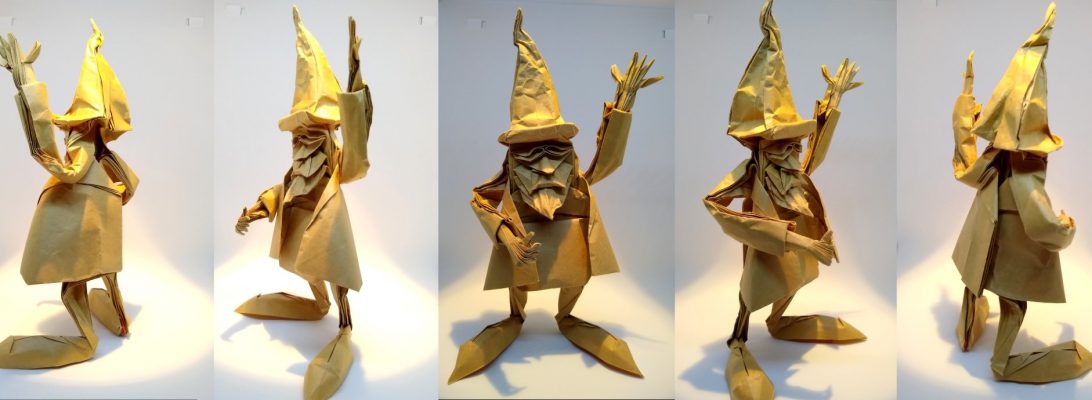It was late in the semester, I was looking for a folding project (to add to the other 4 already on my board – procrastigami strikes again) and noticed in my feeds a 25-day program by Madonna Yoder called “Advent of Tess”. I guess I am supposed to know about Advent, having worked in a Catholic boys school for 33 years, but… apparently it is the 25 days in December leading up to Xmas (learn something every day)
The idea was that Madonna released a CP and a video tutorial each day for 25 days, victims start with hexagons of paper pre-creased into 16-grid triangles, and collapse increasingly difficult combinations of tessellation techniques on the page.

The first few were easy, and collapsed simply, but then I decided I did not need the tutorials and proceeded to mark up the paper with the day’s CP and collapse from that. This approach came awry pretty quickly as the elements began to argue for the same real estate on the sheet and I learned that sequential development was way more sustainable.
The folds started with closed triangle twists (something I had done a lot of previously, so found accurate placement of these fairly easy. We later progressed to “open” triangle twists, which are much harder, and require a “setup” that uses paper tension to define the lines off-grid that were the sides of the triangle.

We then progressed to closed hexagon twists (again, something I had done lots of beforehand) and refined them into “open” hexagon twists – a fascinating variation of a “star puff” of which I had passing familiarity.
Continue reading





